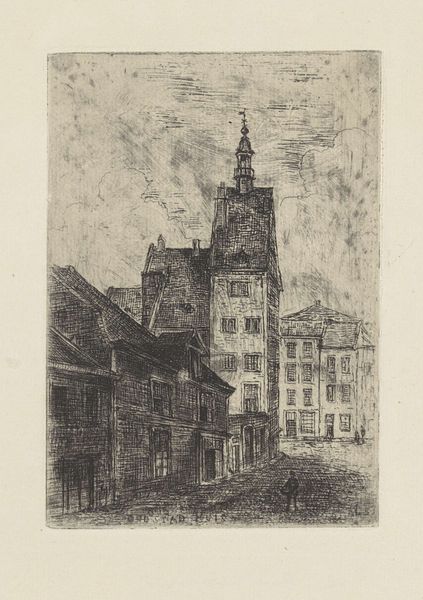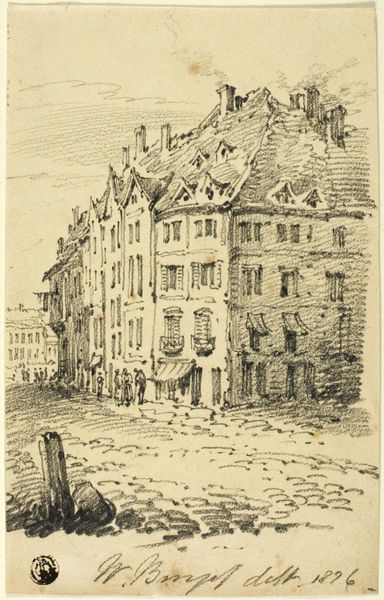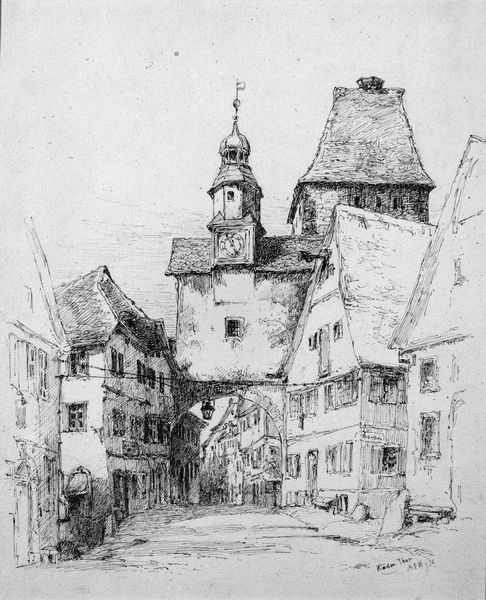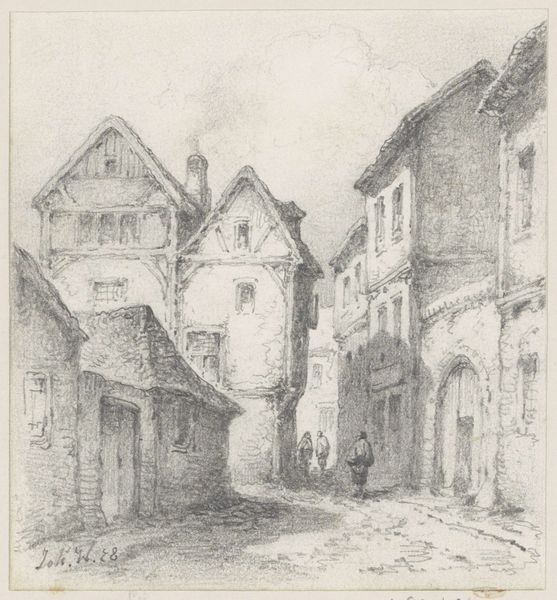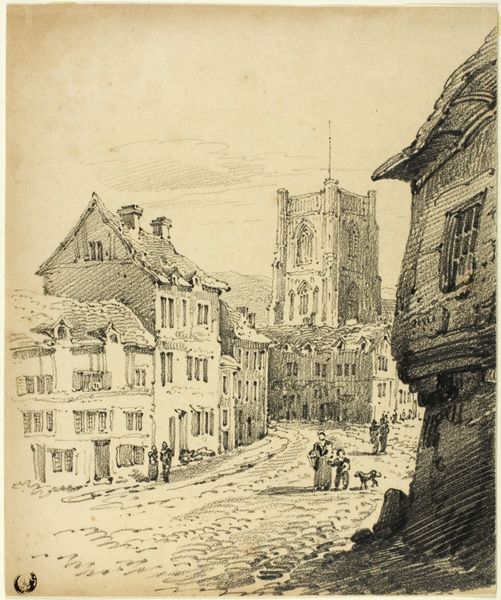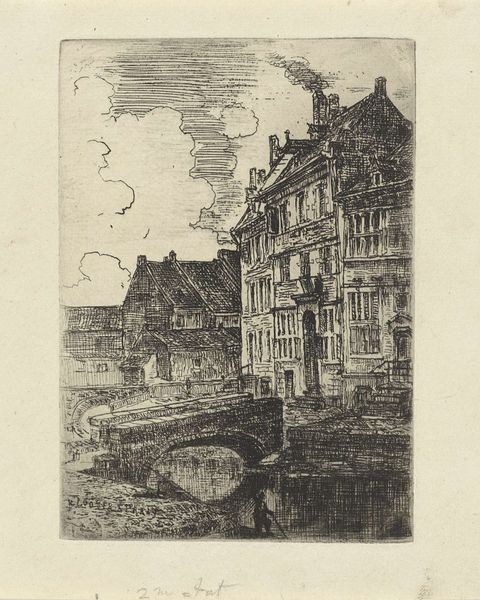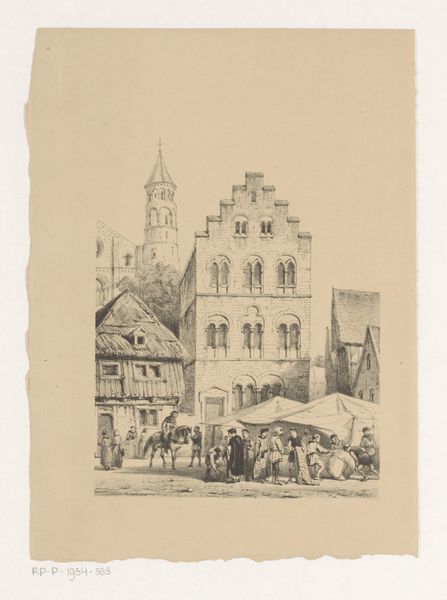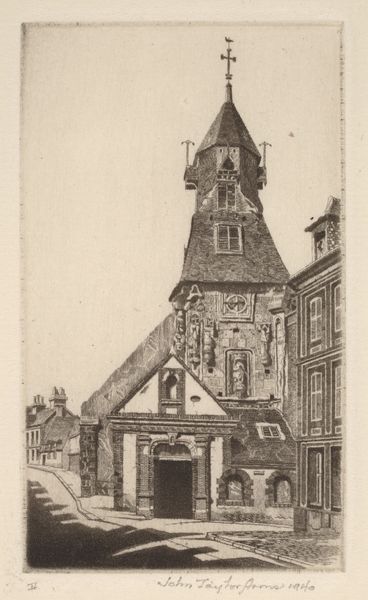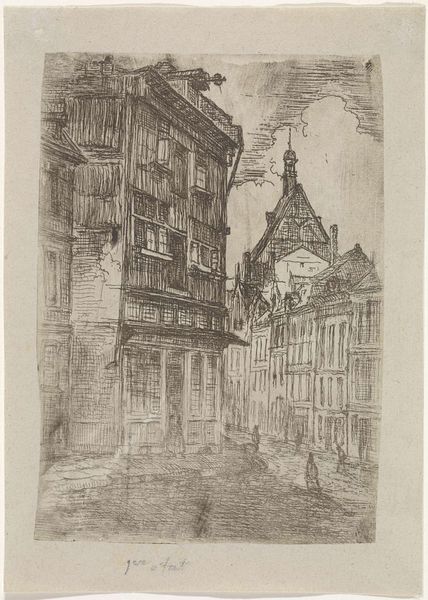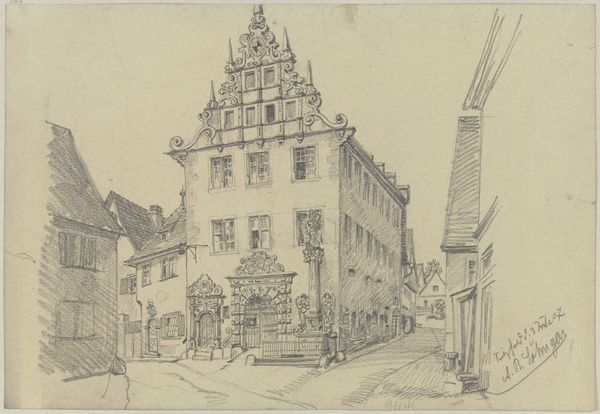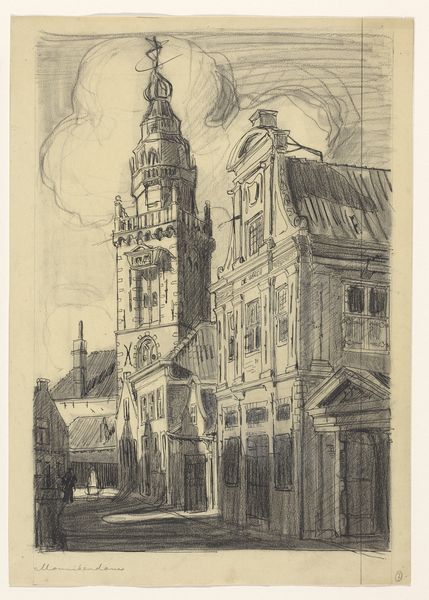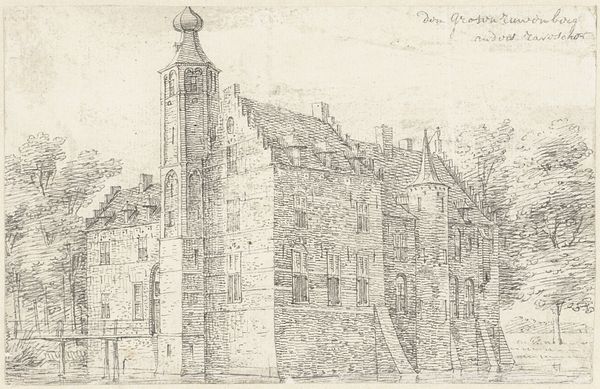
Dinghuis gezien vanuit de Jodenstraat te Maastricht 1830 - 1899
0:00
0:00
alexanderschaepkens
Rijksmuseum
drawing, print, etching
#
drawing
# print
#
etching
#
landscape
#
etching
#
cityscape
#
realism
Dimensions: height 189 mm, width 132 mm
Copyright: Rijks Museum: Open Domain
Editor: Here we have "Dinghuis gezien vanuit de Jodenstraat te Maastricht," an etching by Alexander Schaepkens, likely from the mid-19th century. I'm immediately struck by how the artist captured the depth of the street using only line and tone. It's almost photorealistic but still feels intimate and personal. How do you see the visual construction of this cityscape? Curator: Indeed. Let's observe how Schaepkens articulates space. Note the convergence of orthogonal lines defining the street’s recession. The subtle modulation of tone via etching skillfully models the architectural forms, imbuing them with a palpable sense of mass and volume. Do you perceive how the distribution of light contributes to the overall composition? Editor: Yes, I see it now. The way light subtly defines the forms is fascinating. The areas in light feel almost empty or fading, while areas with detailed hatching add to a grounded feeling. It also feels a bit asymmetrical; what about that? Curator: Precisely! It introduces visual interest, doesn't it? The artist strategically juxtaposes the towering Dinghuis with the lower-lying structures. How does that make you feel? This imbalance disrupts any sense of rigid formalism and generates a dynamic interplay of forms. It's the key element. Editor: I hadn’t considered the push and pull between the structures. Thank you for highlighting those nuances! Curator: The focus on form, light, and composition allows us to move past merely seeing it as a representational artwork, instead to consider Schaepkens' artistry with line, space, and form. It's a careful observation that allows viewers to observe these cityscapes as more than simple depictions, but artworks on their own terms.
Comments
No comments
Be the first to comment and join the conversation on the ultimate creative platform.
